#ancient crete
Text
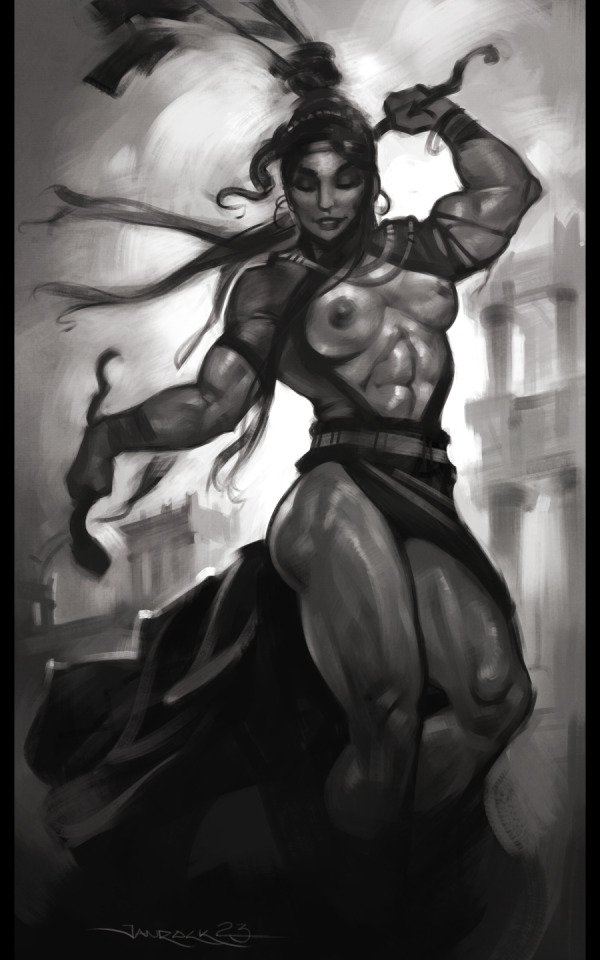
Minoan dance (sketching in b/w)
331 notes
·
View notes
Text
Okay so my mom gave my daughter some books she got from the flea market. Considering how my mom let us watch a ton of inappropriate movies and shows when we were kids, I probably should've checked them before I let my daughter pick one for her bedtime story tonight, but hindsight is hindy and sighty.
Anyway, I couldn't stop giggling when I read her the story about Theseus because this is the most UNHINGED MINOTAUR I HAVE EVER SEEN

First of all, Theseus reminds me of both the knifer and the knifee from that wikiHow "Winning a Fair Fight" meme. Second of all, I know that Ovid described him as "part man, part bull" so this is technically correct, but... wowzers.
Eh, it was either this or a short story about Grendel's bone-crunching ass.
#greek mythology#greek myth art#greek myth memes#greek myth retellings#ancient athens#ancient crete#minotaur#theseus#winning a fair fight?#bedtime stories#lola gives the weirdest gifts sometimes#real life#parenting#flea market finds
63 notes
·
View notes
Text
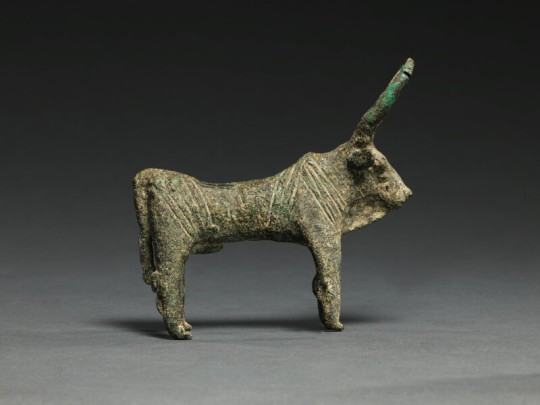

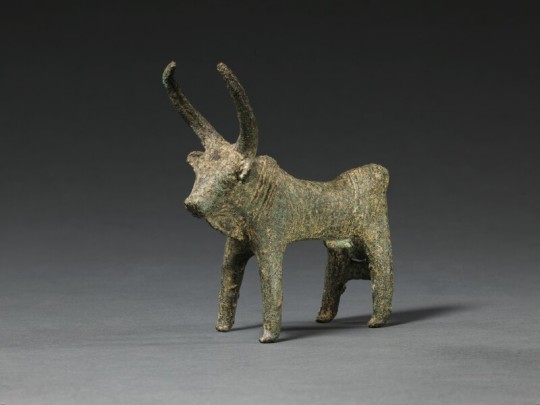
A BRONZE FIGURE OF A BULL, PROBABLY CRETAN
CIRCA LATE 2ND MILLENNIUM B.C.
With large forward-curving horns, wide-set ears, and long straight tail falling down to a broad horizontal strut connecting the back of the hind legs, grooved linear ornament on the body.
Length 12.5 cm.; Height 12.2 cm.
#A BRONZE FIGURE OF A BULL PROBABLY CRETAN#CIRCA LATE 2ND MILLENNIUM B.C.#bronze#bronze statue#bronze sculpture#ancient artifacts#archeology#archeolgst#history#history news#ancient history#ancient culture#ancient civilizations#ancient crete#greek history#greek art
120 notes
·
View notes
Photo

Minoan Snake Goddess / Priestess
🐍 🐍 🐍
#minoan#ancient greece#ancient crete#tagamemnon#greek mythology#bronze aegean#kurjdraws#i hate the hat and i got rid of it
98 notes
·
View notes
Note
HELLO can you explain more about Crete being the home of liars. That's really funny
hello!! yeah!
i first came across this in Emily Wilson’s introduction to her Odyssey: “In Ithaca, he constructs multiple different autobiographies, usually claiming to have come from Crete—the traditional home of liars.”
i did some more digging because that’s an interesting stereotype, and I found that Titus basically made that exact statement in the New Testament claiming, “Cretans are always liars, evil beasts, lazy gluttons.”
That idea probably came from Epimenides, a Cretan himself, stating that, “All Cretans are liars,” an idea which would be known as the Cretan paradox (by saying that, Epimenides implies that he himself is a liar meaning that statement is not true). (x)
This became a whole thing amongst the Greeks, even causing them to coin a new term—“to cretanize” or kretizo, which meant ‘to lie’.
As you can see, this was a widespread idea, so Odysseus identifying himself as a Cretan is quite a silly thing to do, especially when he really wants to go under the radar.
edit: @godsofhumanity has found a mythological source!!! in fact Thetis herself was involved in the origin of this term in this case. On Crete, Medea and Thetis argued over who was the most beautiful and asked a local to judge for them (*sigh*). When he said Thetis, Medea got angry and called all Cretans liars, cursing them to never say the truth again. (x)
I think it’s kinda funny to consider that this happened only a single generation before the Iliad so Odysseus calling himself a Cretan is extra ironic when the association between them and liars is recent and fresh.
#wolfythewitch#greek mythology#greek myth#asks#odysseus#the odyssey#ancient crete#there’s another source that just refuses to link!!!!!#updated
107 notes
·
View notes
Text

Gold Cretan laurel wreath of the Hellenistic period
4th-3rd century BCE
Legion of Honor, San Francisco
Photo source: 🏺
34 notes
·
View notes
Text
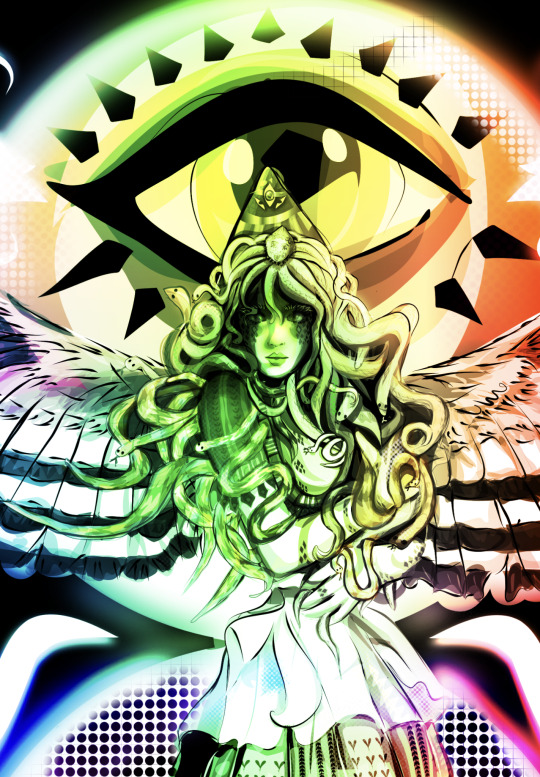
Medusa as a Jester for Greek Carnival of Apokries 🎠🎪🎭🌈.

So here are the design elements I added. The layered dress is based on the clothing of Ancient Minoan Women from Crete (3000-1100 BCE).
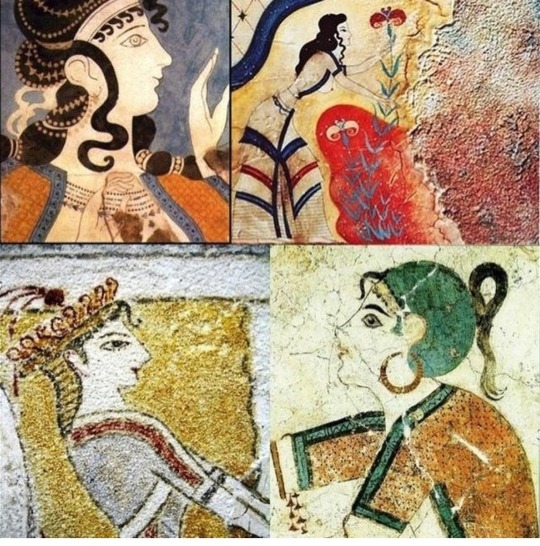

As you can see the skirt were layered with fabric prints, cut at the waist, then totally open at the chest.
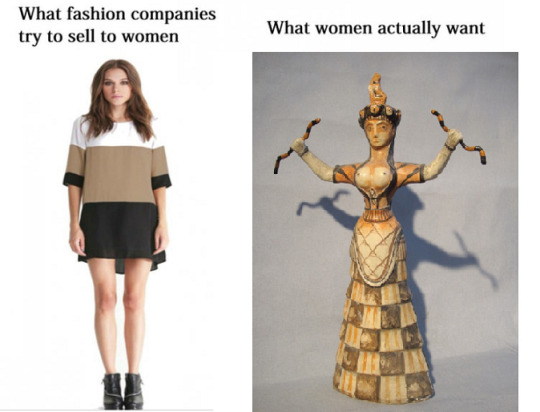
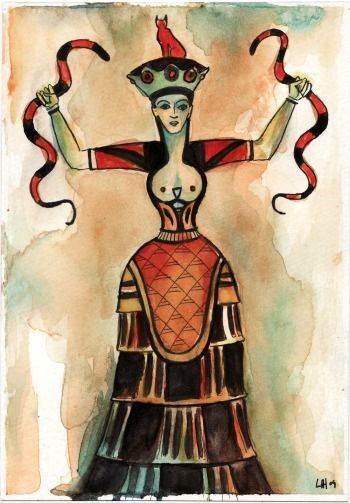
I tried to mimic the design, but gave it a more flowing 'Alice in Wonderland' , Jester look for the Carnival theme.
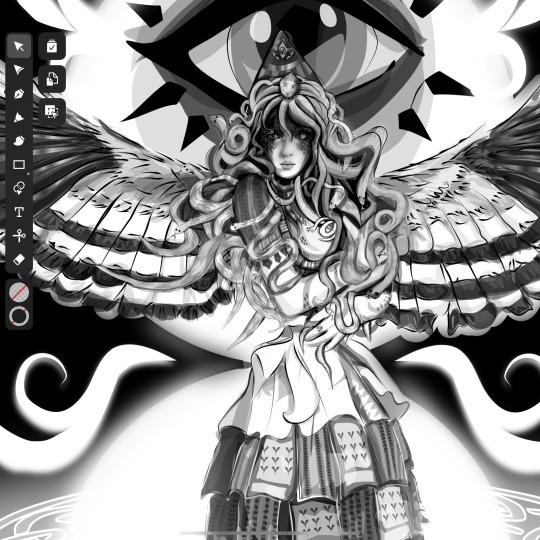
The wings are based on the African/ Greek HooPoe which I felt looked like the original Medusa wing design. Her wings are described as black, white, and gold.
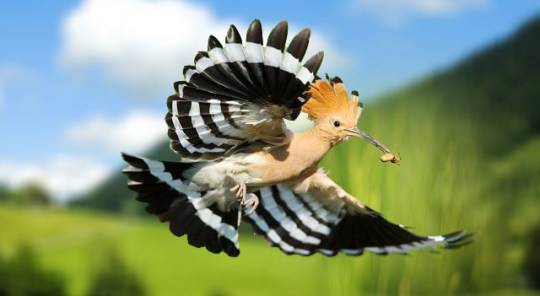
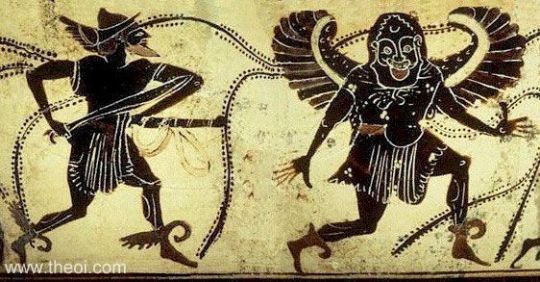
Then I added a Jester look to give her a unique style to go along with her scales. This is in theme with the Greek Carnival of Apokries. This festival dates back to Dionysos, the ancient Greek god of wine, fun and fertility.

That's my art and history rant! Hope you enjoyed! 🐍🎭💕
#medusa#greek mythology#ancient greece#ancient history#mythology#feminism#mythology and folklore#gorgon#goddess#greek gods#harpy#harly quinn#jester#minoan#ancient crete#greek myth art#snake goddess#snake#gorgon oc#character design#oc art#perseus#andromeda#harpies
12 notes
·
View notes
Photo
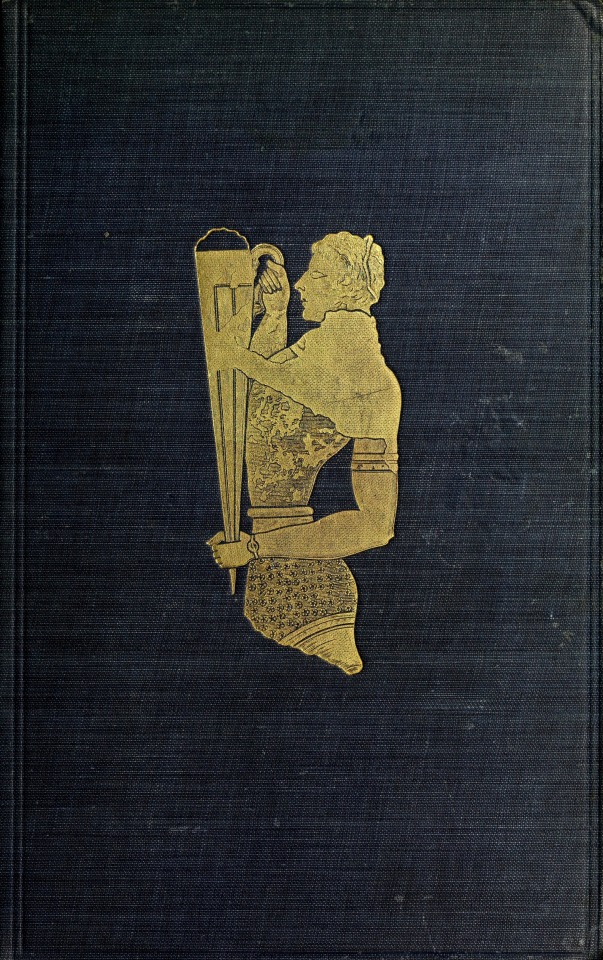
The discoveries in Crete and their bearing on the history of ancient civilisation. 1907. Cover.
Internet Archive
279 notes
·
View notes
Text

Keftiu (Minoan, Cretan, later Mycenaean) men depicted bringing tribute within the tomb chapel of the vizier Rekhmire (TT100).
New Kingdom, 18th Dynasty, reign of Thutmose III - Amenhotep II, c. 1479-1400 B.C.
Valley of the Nobles, Theban Necropolis
Photograph by manna4u
http://facebook.com/Egypt.Museum
#ancient egypt#minoan#mycenaean#crete#ancient crete#cretan#ancient mediterranean#eastern mediterranean#mediterranean#ancient trade#history#egypt
51 notes
·
View notes
Text
The Minoans don't have the tradition that the Polynesian navigators do of having migrated thousands of miles by the sky, but still a very interesting finding.
25 notes
·
View notes
Text

my minoan flag statement earrings are inspired by the colours and decorative motifs of the STUNNING minoan frescoes! they’re handmade from a mixture of gold mirrored acrylic + red/turquouse marbled acrylics, and are available with sterling silver studs or gold plated clip ons ☀️💛
(and i ship worldwide!)
21 notes
·
View notes
Text

THE SEA KINGS OF CRETE by James Baike (London: A. & C. Black: [1910] 1913). Illustrated with dozens of black and white photos.

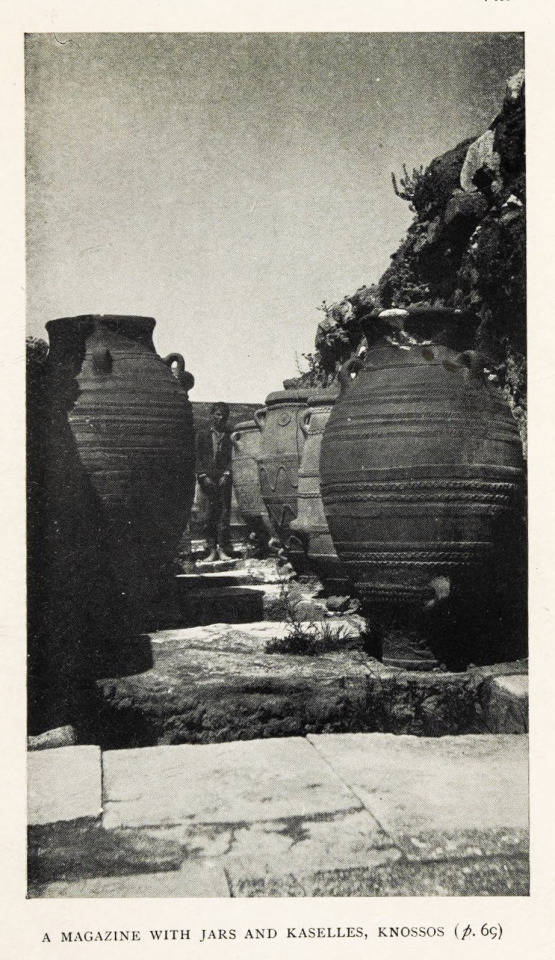



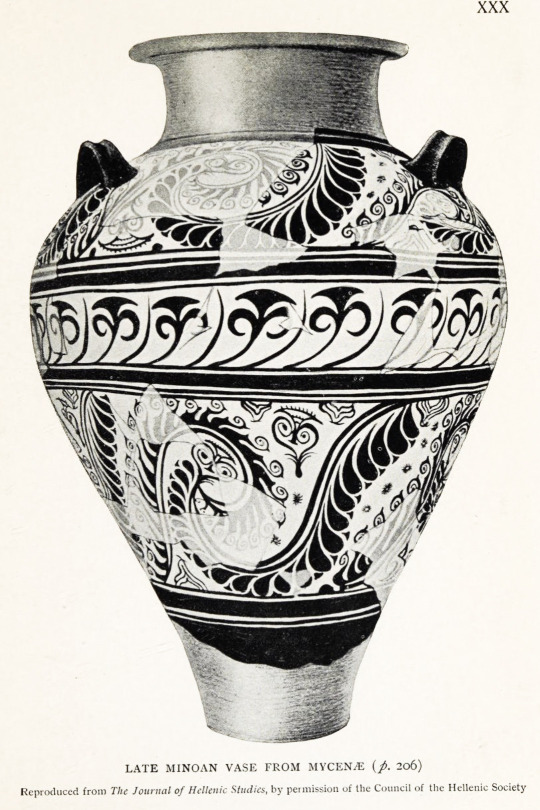

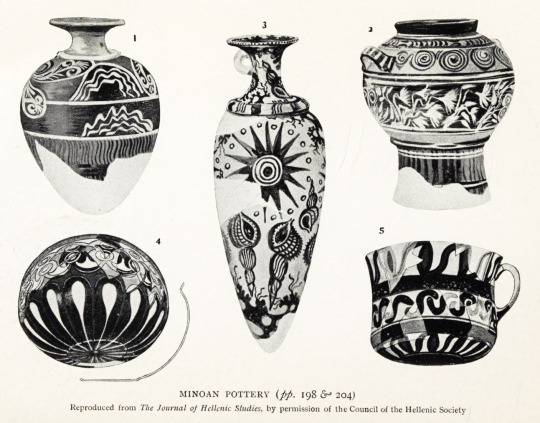
source
#beautiful books#book blog#books books books#book cover#books#illustrated book#vintage books#ancient crete#isle of crete#minoan
31 notes
·
View notes
Text
History of Crete

View On WordPress
#Adventure Seekers#Adventure Seekrs#Aegean Sea#Ancient Crete#Ancient Greece#Ancient people#blog#Blogger#Crete#Crete History#Culture#Greek Islands#History#Instagram#Knossos#Minoa#Minoan#Settlers#Travel#Travel Couple#Travel Duo#Visiting Crete#Visiting Greece#vlog#Vlogger#World History#World Travel#World War 2#Youtube
6 notes
·
View notes
Photo

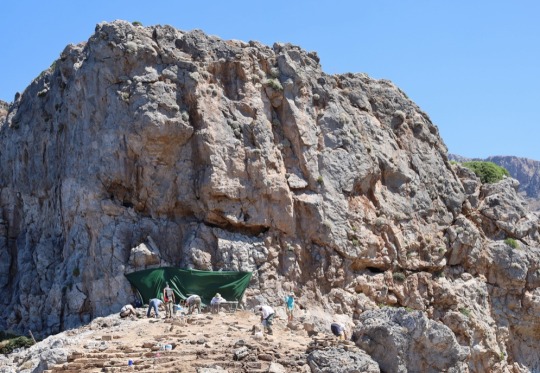



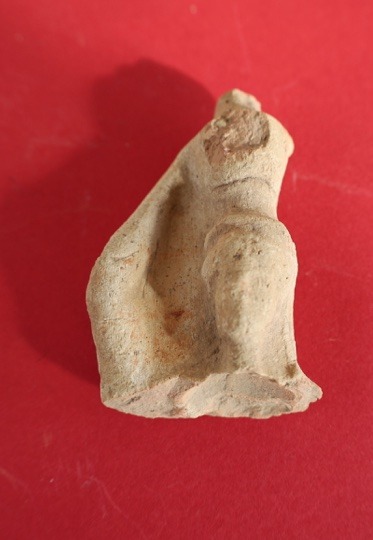



Offerings to Goddess Demeter Uncovered in Archaic Temple on Crete
Excavations of the ancient city of Phalasarna in western Crete have unearthed hundreds of offerings to the goddess Demeter in the remains of an ancient temple. The temple dates to the late 4th century B.C. and was built in Doric style on natural rock with two fluted columns, capitals, metopes and pediment. Estimates indicate it was more than 25 feet high and 16 feet wide. It is the only temple of its kind in Crete.
The temple was built at the junction of two mountain peaks where a natural cave was formed. The cave had abundant water and archaeologists believe an Archaic temple dedicated to a chthonic (related to the Underworld) deity was built there before 650 B.C. It was destroyed when the cave collapsed. Another temple was built in the 6th century, but it was destroyed in an earthquake. Then in the 5th century another was built and you guessed it, it too was destroyed. The last attempt was the 4th century temple.
The remains that are present today were from a reconstruction of the temple after the cave collapse. The perimeter of the enclosure is still in place, as is a monumental staircase leading to two buildings with a shared wall between them. The eastern building was the primary temple.
The sanctuary of the temple had a tiled floor, as did the rest of the floors of the temple. On the floor were five offering cases, inside which were revealed vases of good quality with elegant shapes, some of ceremonial character, one of which was inscribed in the Doric dialect with the name of the goddess to whom the temple was dedicated: A K E S T O I D A M A T R I , Akestoi dedicates to the goddess Demeter.
The rocky areas and the ancient deposits in excavated pits revealed findings mainly from the Archaic times. Daedalic art seems to dominate the early Archaic period (650 BC) in the form of nude female figures with Daedalic headdress and high pole. From the findings of the 6th c. e.g. Egyptian and Phoenician glass objects, terracotta bird and animal figurines, arrowheads and spearheads, miniature vases, enthroned female figures, and a female figurine holding a poppy and pomegranate stand out. Regarding the findings of the 4th and 3rd c. BC the hydriai stand out, a beaked ritual prochos with a red representation of a flying Cupid, iron spikes and alabaster vessels.
This was a physically challenging dig. The remains are on a high, rocky hill overlooking the sea. Archaeologists had to build a road to even reach the dig site, and then had to dig as quietly as possible so as not to trigger falling stones from above. The site itself was covered with rocks that the team had to remove with crowbars.
Phalasarna was settled going back to the Minoan period (3500 B.C. – 1100 B.C.). Its natural harbor made it an important stop in the maritime trade routes of the Aegean and Mediterranean. It reached its peak of prosperity in the 4th century B.C. when the monumental harbor was built. It consisted of four towers linked by defensive walls and quays. The enclosed harbor was connected to the sea by two channels, a shallow one for small boats, a deeper one for larger vessels.
The ancient city was destroyed in 67 B.C. by Roman forces under Pompey Magnus (then not yet Magnus) tasked with routing out and destroying the Mediterranean strongholds of Cilician pirates. They blocked the two harbor channels by dropping massive blocks of stone into them, and the city was abandoned. In 365 A.D., a massive earthquake, one of the greatest seismic events in earth’s history, raised the west coast of Crete by 30 feet. In an instant the ancient harbor was thrust inland and buried. They would remain hidden under tons of soil until excavations began at the site in 1966.
#Offerings to Goddess Demeter Uncovered in Archaic Temple on Crete#archeology#archeolgst#ancient city of Phalasarna#ancient Crete#ancient artifacts#history#history news#ancient history#ancient culture#ancient civilizations#greek history#crete history#long reads
33 notes
·
View notes
Text

Asara, a minoan priestess. She's kinda crushing on the person who gave her the flower. wink
-
More of my minoan art: click
#minoan#ancient greece#tagamemnon#bronze age aegean#ancient crete#minoan priestess#my minoan art#art#kurjdraws#i kinda hate it cuz i cant do light and shading#never really learned properly lol im just doing random shit
47 notes
·
View notes
Note
I really admire you and I wish I was as academic and eloquent as you. I want to ask, do you think Minos could've been a Cretan moon god at some point? Almost all (fragmented and scarce) evidence points towards it. His name (both Asterion and Minos), his myths, his family line. I kinda lean towards both the Minotaurus and Minos being originated from the same god, that were later separated into two separate entities. But who knows, there are a lot of Minos and Asterions in Greek mythology.
Thank you SO much for your wonderful words and at the same time I am about to disprove them with my mediocre answer.
What I know is that Asterion was Minos' step-father and then Minos named one of his many sons Asterion after him. I haven't read any analysis suggesting they could once be perceived to be the same individual, or even the Minotaur too.
While Minos was a demigod, I am not sure Ancient Greeks viewed him as a god, but more like a mighty king. We can't tell much about what Cretans (Minoans) viewed him like, because all sources come from the Greeks of the mainland who lived several centuries after any potential glorious Minoan king could have lived and inspired the future generations. So, by the myths relating to Minos, we can tell more about the beliefs of the Ancient Greeks and their perception of Crete's history and culture than what we could tell about the actual Minoans.
I assume the moon god speculation comes from the regularity of some of his actions (i.e feeding young people to the Minotaur exactly every year, taking his laws from Zeus exactly every nine years) or maybe the names? Asterion possibly derives from the Greek word for star (astro - asteri) and Minos sounds like the Greek word for month (min - minas). It's not likely though because they are written differently:
Μίνως (King Minos)
Μήνας (Minas - month)
This η - ι difference is etymologically significant in Greek and most likely indicates different lingual roots.
Minos is almost certainly the Greek version of the name of a legendary person that once lived in Minoan Crete. But we know so little about the Minoans' language and how close it was to Mycenaean Greek (if at all) that nearly nothing can be speculated.
That's my two cents, however I have not explored Minos' myths in depth. Many things definitely escape me and you might as well be onto something.
#greek mythology#crete#minoans#king minos#ancient crete#ancient greece#anon#ask#lovely people#things that make my day
22 notes
·
View notes